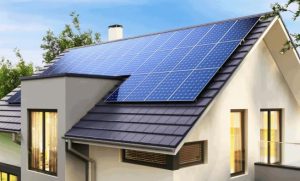The Impact of Temperature on Solar Panel Efficiency: Insights
When the sun is shining bright and the air feels like a blast furnace, it's easy to assume that solar panels are at their peak performance. Surprisingly, the reality is a bit more nuanced. The relationship between temperature and solar panel efficiency is complex and crucial for anyone looking to maximize their solar energy output. Let's break down the facts, dispel myths, and reveal how temperature truly affects solar panel performance.

The Temperature Coefficient: A Critical Player
Understanding the temperature coefficient is key to grasping how solar panels respond to heat. This coefficient, typically ranging between -0.3% to -0.5% per degree Celsius, indicates how much a panel's efficiency will decrease with each degree above 25°C (77°F). In simpler terms, as the mercury rises, solar panels tend to lose their cool, along with a slice of their efficiency.
Impact in Numbers: What to Expect
Consider a high-efficiency solar panel that operates with 20% efficiency under standard test conditions (25°C or 77°F). Should the panel's temperature elevate to 40°C (104°F)—a common scenario in many sun-drenched regions—its efficiency could drop by up to 2% to 3%. While this might not sound drastic, over the course of a hot day, this reduction can significantly impact the total energy production.
Material Matters: Not All Panels Feel the Heat the Same
Solar panels come in various materials, each with its own set of characteristics and temperature sensitivities. Monocrystalline silicon panels, with their high purity level, are generally more efficient but can be more affected by heat. Polycrystalline silicon panels offer a slightly lower efficiency and similar temperature sensitivity. Thin-film panels, on the other hand, including those made from cadmium telluride or amorphous silicon, often have better heat tolerance, making them a compelling choice for hot climates.
Mitigation Strategies: Keeping the Heat at Bay
Innovative solutions are being developed to help solar panels stay efficient even as the thermometer climbs. Cooling technologies, reflective coatings, and improved panel designs aim to reduce heat absorption and maintain higher efficiency levels. Strategic installation practices, such as ensuring adequate airflow around the panels, can also mitigate temperature effects.
Real-World Application: Solar Farming in Hot Climates
Solar farms located in hot, arid regions are a testament to the critical role of temperature management in solar energy production. These facilities often employ advanced cooling systems and select solar panel materials that are less susceptible to efficiency losses from heat, ensuring that the energy yield remains high despite soaring temperatures.
The Bottom Line: Efficiency in the Balance
The impact of temperature on solar panel efficiency is undeniable. As the global push for renewable energy continues, understanding and addressing this challenge is essential for optimizing solar power systems. For those harnessing the sun's rays, choosing the right panels and employing smart installation techniques can make all the difference in maximizing energy production, regardless of the heat.
The quest for more temperature-resistant solar technologies is ongoing, promising a future where solar panel efficiency temperature concerns are mitigated, if not altogether eliminated. This progress will be pivotal in expanding solar energy's viability across the globe, enabling a cleaner, more sustainable energy landscape.